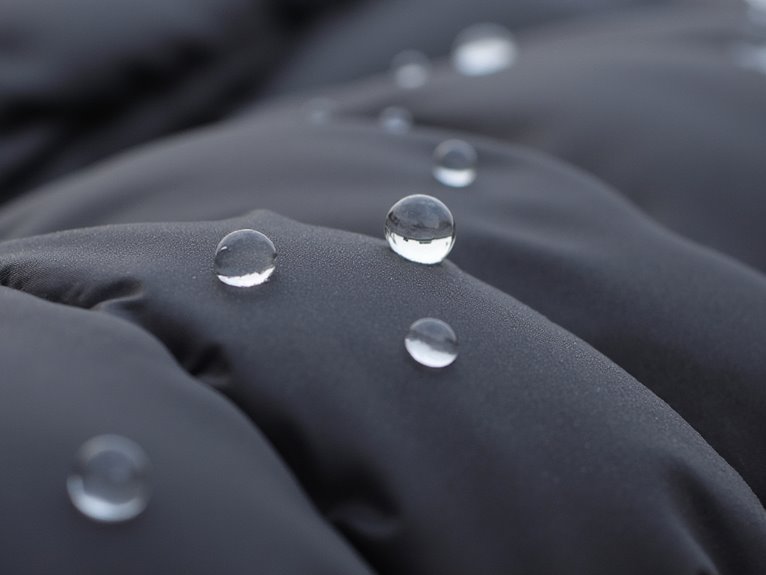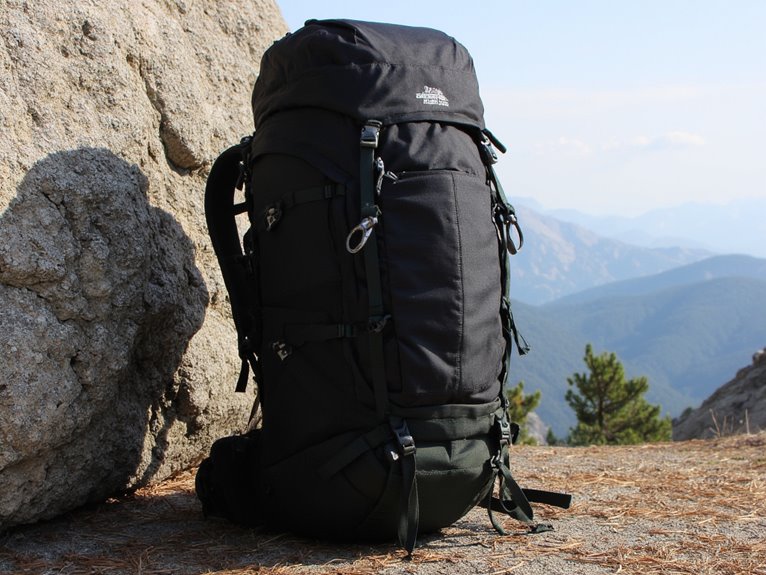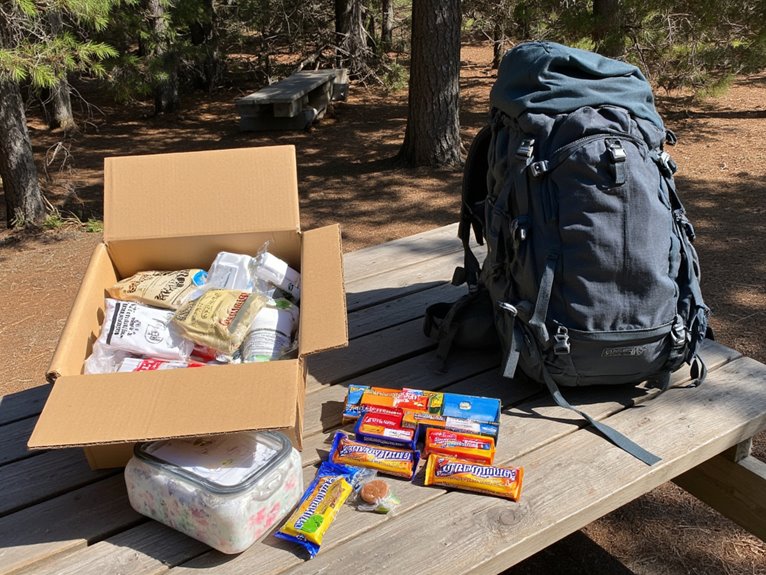What Is Hydrophobic Down? Pros and Cons for Backpacking
Hydrophobic down is chemically-treated insulation that repels water at the molecular level, absorbing 30% less moisture than untreated down while drying 60% faster. You’ll benefit from retained loft in wet conditions and better performance during unexpected weather changes. However, it’s not waterproof when fully saturated, costs 20-30% more, and adds 10-15% weight. The chemical treatments degrade over time and require specialized cleaning products for maintenance, but understanding these trade-offs helps optimize your gear selection.
We are supported by our audience. When you purchase through links on our site, we may earn an affiliate commission, at no extra cost for you. Learn more. Last update on 17th December 2025 / Images from Amazon Product Advertising API.
Notable Insights
- Hydrophobic down is water-treated insulation that repels moisture at the molecular level while maintaining breathability and loft.
- It absorbs 30% less moisture, dries 60% faster, and retains 60% more loft when wet compared to untreated down.
- Major drawbacks include 10-15% added weight, 20-30% higher cost, and degrading chemical treatments over time requiring special maintenance.
- Performance excels in damp conditions but fails when fully saturated, making it unsuitable for continuous rain or high humidity.
- Best suited for backpacking in unpredictable weather where moisture resistance matters more than weight savings or budget considerations.
Understanding Hydrophobic Down Technology and Treatment
Every outdoor enthusiast who’s experienced the frustration of soggy, useless down insulation understands why hydrophobic down technology represents a significant advancement in outdoor gear.
Hydrophobic treatment involves applying water-repellent chemicals directly to individual down plumes at the molecular level. This process occurs during manufacturing, typically through specialized spraying or washing with durable water repellent compounds.
The treatment creates a thin hydrophobic layer around each plume without blocking airflow. Proprietary methods like DownTek™ chemically enhance surface tension, causing water to bead and roll off rather than absorb.
This polymer-based technology creates a low-energy surface that repels water molecules for up to 35 times longer than untreated down insulation. The result maintains loft and prevents clumping in damp conditions while preserving breathability.
Key Benefits of Hydrophobic Down for Outdoor Adventures
When backpackers venture into unpredictable environments, hydrophobic down delivers measurable performance advantages that can make the difference between comfort and misery.
This treated insulation absorbs 30% less moisture than untreated down, maintaining critical warmth when you encounter rain or condensation. Your gear’s moisture management capabilities improve dramatically—hydrophobic down dries 60% faster and retains over 60% more loft when wet.
Insulation retention translates directly to heat retention. You’ll maintain body warmth even during unexpected weather changes.
Superior insulation performance means your body stays warm when temperatures drop unexpectedly in the backcountry.
The treatment resists both external moisture and internal condensation from your breath or perspiration. Your sleeping bag or jacket recovers quickly after exposure, reducing downtime between uses.
This enhanced performance extends your gear’s versatility across diverse conditions while preventing dangerous insulation failure during cold-weather excursions.
Drawbacks and Performance Limitations
Despite its impressive moisture management improvements, hydrophobic down isn’t a waterproof solution and comes with several practical limitations that backpackers must consider.
When fully saturated, it still loses significant loft and insulating power. Weight considerations become important since hydrophobic treatments add 10-15% to product weight compared to untreated alternatives.
Moisture retention remains problematic in extreme conditions. Continuous rain or high humidity can overwhelm the treatment’s effectiveness. The coating degrades over time, requiring specialized cleaning products to maintain water-repelling properties.
Cost penalties are substantial—expect 20-30% higher prices than standard down gear.
Synthetic alternatives often outperform hydrophobic down in wet conditions while costing less. Environmental concerns arise from chemical treatments used in processing.
These limitations make hydrophobic down unsuitable for consistently wet climates.
Real-World Field Performance and Expedition Use

Real-world testing reveals hydrophobic down‘s actual performance under expedition conditions where theoretical benefits meet practical challenges.
Multiple expeditions demonstrate varying outcomes depending on environmental conditions and gear selection approaches.
Real world performance data shows hydrophobic down maintains insulation better than untreated alternatives in damp conditions. However, expedition success stories include both hydrophobic and standard down applications.
Tom Livingstone’s 7-day climb used non-hydrophobic down effectively in dry conditions, while NOMAD selected Nikwax Hydrophobic Down specifically for superior water resistance.
Key field performance factors include:
- Moisture absorption reduced by 40% compared to untreated down
- Faster drying times enable quicker recovery during multi-day expeditions
- Better insulation retention when exposed to humidity and light precipitation
Mountain Equipment notes hydrophobic treatment isn’t essential for most conditions, highlighting the importance of matching insulation type to expected environmental challenges.
Maintenance Requirements and Environmental Considerations
While hydrophobic down offers performance advantages in the field, it demands more careful maintenance than standard down and raises environmental questions that backpackers should consider.
Proper care techniques include washing in cold water with gentle detergents and drying on low heat with tennis balls to prevent clumping. Harsh chemicals will degrade the hydrophobic treatment over time. Store gear in dry conditions to maintain treatment effectiveness.
| Maintenance Factor | Requirement |
|---|---|
| Washing Temperature | Cold water only |
| Detergent Type | Gentle, chemical-free |
| Drying Method | Low heat with tennis balls |
| Storage Conditions | Dry environment |
| Treatment Longevity | Degrades over time |
Environmental impacts remain largely undocumented. The molecular-level chemical treatments may affect water systems, and the recyclability of treated products isn’t well-established. These factors increase the overall environmental footprint compared to untreated down.




